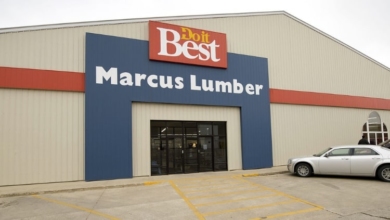Growth Strategies, Market Challenges Define Home Improvement Q1 2024

In the first quarter of 2024, the home improvement industry numbers reflect a complex interplay of growth strategies, digital transformation, and market challenges. A look at the recent Q1 earnings reports from Ace Hardware, The Home Depot, and Lowe’s show that these companies are navigating these dynamics with strategic initiatives and focusing on customer engagement in the face of economic fluctuations.
In fact, the first quarter of 2024 has provided a fascinating snapshot, reflecting both resilience and challenges. Here are the essential highlights from the earnings reports of Ace Hardware, The Home Depot, and Lowe’s.
Ace Hardware: Steady Growth Amid Strategic Adjustments
In Q1 2024, Ace Hardware reported revenues of $2.1 billion—a 2.5 percent increase from the same period last year. This growth was fueled by several factors, including the addition of 78 new domestic stores and acquisitions by the Ace Home Services business. Notably, there was a 9 percent surge in their digital business, reflecting the increasing importance of online sales channels.
Despite the revenue increase, Ace Hardware’s net income for the first quarter was $46.9 million, a significant 29.2 percent decrease from Q1 2023. This drop was anticipated due to higher operating expenses and increased interest expenses. In the Ace Q1 earnings report, President and CEO John Venhuizen highlighted the company’s strategic investments in expanding their digital footprint and enhancing same-store sales, which grew by 0.4 percent.
Ace’s ability to increase same-store gross profit by 2.9 percent and boost digital business by 47 percent through the Ace app indicates a strong strategic direction focused on digital transformation and operational efficiency. The company’s total store count grew to 5,945 worldwide.
For more information, here is Ace’s Q1 2024 earnings press release and a full financial statement.
Home Depot: Navigating Market Challenges
Home Depot reported sales of $36.4 billion for the first quarter of fiscal 2024, a 2.3 percent decrease compared to the previous year. Comparable sales also saw a decline, with a 2.8 percent decrease overall and a 3.2 percent drop in the U.S. market. This downturn can be attributed to a delayed start to spring and continued softness in larger discretionary projects.
Despite the sales decline, Home Depot managed to achieve net earnings of $3.6 billion. In the earnings report, CEO Ted Decker emphasized the company’s commitment to store readiness, product assortment, and associate engagement, which he said are critical for navigating the seasonal fluctuations and market challenges.
The company’s strategy appears focused on maintaining market share and preparing for the seasonal uptick as spring progresses. Home Depot has a network of 2,337 retail stores and a workforce of about 465,000 associates.
For Home Depot’s Q1 earning press release and a full financial statement, visit their site.
Lowe’s: Strategic Shifts and Market Positioning
Lowe’s reported net earnings of $1.8 billion for the first quarter of 2024, with total sales amounting to $21.4 billion. This represents a decline from $22.3 billion reported in the first quarter of 2023. The company’s comparable sales decreased by 4.1 percent, reflecting a decline in DIY big-ticket discretionary spending, although this was partially offset by positive sales in pro and online segments.
CEO Marvin Ellison pointed out that despite the challenges, Lowe’s has seen a positive start to spring, driven by strong execution and enhanced customer service. The launch of a new DIY loyalty program and the expansion of same-day delivery options were notable moves aimed at boosting customer engagement and satisfaction.
Lowe’s continues to push its Total Home strategy, focusing on growth in pro and online segments. The company’s operational footprint includes 1,746 stores, providing a solid foundation for its strategic initiatives.
Here is Lowe’s Q1 2024 full financial statement and press release.
Retail Hardware Industry Trends and Outlook
The first quarter of 2024 has highlighted several key trends in the home improvement industry:
1. Digital transformation. Both Ace Hardware and Lowe’s have reported significant growth in their digital business, underscoring the importance of online sales channels. Home Depot also emphasized its readiness in product assortment both in-store and online, reflecting a broader industry trend towards digital integration.
2. Operational efficiency. Companies are focusing on improving same-store sales and gross profits. Ace Hardware’s increase in same-store gross profit and Lowe’s enhanced customer service initiatives are examples of efforts to drive operational efficiency and customer satisfaction.
3. Market expansion and store readiness. Despite economic headwinds, there is a clear emphasis on expanding store networks and ensuring readiness for seasonal demand. Ace Hardware’s addition of new stores and Home Depot’s emphasis on store readiness for spring are indicative of this trend.
4. Strategic investments. Higher operating and interest expenses have impacted net income, as seen with Ace Hardware, but these are part of strategic investments aimed at long-term growth and market positioning.








